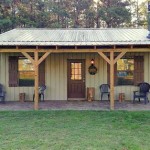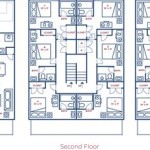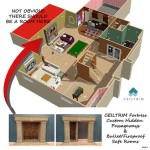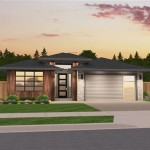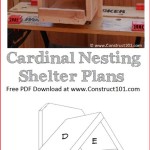Tiny home house plans provide a framework for designing and constructing compact, space-efficient dwellings. These plans typically outline the layout, dimensions, and materials required to build a tiny home, which can range in size from 100 to 400 square feet. Tiny homes offer an attractive option for individuals seeking a more sustainable, affordable, and mobile lifestyle.
The popularity of tiny home house plans has surged in recent years, driven by factors such as rising housing costs, increasing environmental awareness, and the desire for a simplified living experience. These plans enable homeowners to create customized living spaces that meet their specific needs and budget, whether it’s a cozy one-bedroom cabin or a fully-equipped mobile home.
In this article, we will delve into the intricacies of tiny home house plans, exploring their benefits, considerations, and practical implementation. We will examine the various types of tiny home designs, provide tips for maximizing space and functionality, and discuss the legal and financial aspects of tiny home ownership. Whether you are a seasoned builder or a first-time homeowner, this guide will empower you with the knowledge and resources necessary to design and build your dream tiny home.
Embrace the Tiny Home Lifestyle: 8 Key Considerations
- Maximize space
- Prioritize functionality
- Consider legal requirements
- Address financial implications
- Explore zoning regulations
- Choose eco-friendly materials
- Plan for mobility
- Incorporate smart storage
Adopting a tiny home lifestyle necessitates careful planning and consideration of various aspects. By addressing these key points, you can design and build a tiny home that meets your needs and aspirations.
Maximize space
**Loft design:**Utilize vertical space by incorporating a loft into your tiny home design. This elevated sleeping area can free up valuable floor space below, allowing for additional living or storage areas. Consider incorporating stairs or a ladder for access, and ensure proper ventilation and lighting in the loft space.**Multi-functional furniture:**Choose furniture that serves multiple purposes. For instance, a sofa that converts into a bed can provide both seating and sleeping arrangements, while a coffee table with built-in storage can serve as both a surface and a storage solution. Ottomans with hidden compartments can provide additional seating and storage space.**Vertical storage:**Maximize vertical space by installing shelves, cabinets, and drawers that reach up to the ceiling. Utilize wall-mounted storage solutions to keep items off the floor and within easy reach. Consider using stackable bins and baskets to organize and store belongings efficiently.**Space-saving appliances:**Opt for space-saving appliances designed specifically for tiny homes. These appliances, such as compact refrigerators, stackable washer/dryer units, and under-counter dishwashers, can significantly reduce the footprint of essential household appliances. Look for appliances with multiple functions to maximize their utility.**Paragraph after details:**By implementing these space-maximizing strategies, you can create a tiny home that feels spacious and comfortable, despite its compact size. Careful planning and innovative design solutions can help you optimize every square foot of your living space, ensuring that you have a functional and enjoyable home.
Prioritize functionality
In designing a tiny home, prioritizing functionality is paramount to ensure that the limited space is utilized efficiently and effectively. Every aspect of the home should be carefully considered to maximize its functionality and create a comfortable and livable space.
Design for flexibility: Tiny homes often require creative solutions to accommodate various activities and needs. Consider flexible design elements such as movable walls, partitions, or Murphy beds that can transform the space to suit different purposes. This flexibility allows you to adapt your tiny home to your changing needs and activities, whether it’s working, entertaining, or simply relaxing.
Maximize natural light and ventilation: Natural light and ventilation are essential for creating a healthy and inviting living environment. Incorporate ample windows and skylights to let in natural light and provide cross-ventilation. This can reduce the need for artificial lighting and improve air quality, making your tiny home more comfortable and energy-efficient.
Optimize storage and organization: Storage is crucial in tiny homes, as every inch of space needs to be utilized efficiently. Plan for ample storage solutions, such as built-in shelves, drawers, and cabinets, to keep your belongings organized and accessible. Consider vertical storage options and multi-purpose furniture to maximize space while maintaining functionality.
Paragraph after details:** By prioritizing functionality in your tiny home design, you can create a space that meets your specific needs and lifestyle. Careful planning and innovative design solutions will ensure that your tiny home is both comfortable and efficient, allowing you to live comfortably and conveniently within a compact footprint.
Consider legal requirements
Before embarking on your tiny home building project, it is crucial to consider the legal requirements associated with tiny homes. These regulations vary depending on your location, so it is essential to research and understand the specific laws and building codes applicable to your area.
Zoning regulations
Zoning regulations determine the types of structures that are permitted in specific areas. Tiny homes may not be explicitly defined in local zoning codes, so it is important to determine if they are classified as single-family homes, accessory dwelling units (ADUs), or recreational vehicles (RVs). Understanding the zoning classification of tiny homes in your area will help you determine their legality and any potential restrictions on their placement and use.
Building codes
Building codes establish minimum standards for the construction of buildings to ensure safety and habitability. Tiny homes must comply with the same building codes as traditional homes, even though they may be smaller in size. These codes address aspects such as structural integrity, electrical systems, plumbing, insulation, and fire safety. By adhering to building codes, you can ensure that your tiny home is safe and meets the minimum requirements for habitability.
Permits and inspections
Most jurisdictions require permits for the construction and occupancy of tiny homes. The permit process involves submitting plans for review and approval by local building officials. Inspections may also be required during and after construction to ensure compliance with building codes. Obtaining the necessary permits and passing inspections are essential to ensure the legality and safety of your tiny home.
Understanding and complying with legal requirements is crucial for a successful tiny home building project. By researching zoning regulations, building codes, and permit requirements, you can avoid potential legal issues and ensure that your tiny home is built to the appropriate standards for safety and habitability.
Address financial implications
Construction costs
The cost of building a tiny home can vary depending on factors such as the size, materials used, and complexity of the design. It is important to carefully estimate the construction costs before starting your project to ensure that you have the necessary financial resources. Consider the cost of materials, labor, permits, and inspections. Research and compare different construction methods and materials to find the most cost-effective options for your tiny home.
Land acquisition
If you do not already own land, you will need to factor in the cost of acquiring land for your tiny home. The price of land can vary significantly depending on the location and size of the property. Research land prices in your desired area and consider factors such as zoning regulations and access to utilities when selecting a site for your tiny home.
Utilities and ongoing expenses
Tiny homes typically require the same utilities as traditional homes, such as electricity, water, and sewage. The cost of utilities will vary depending on your usage and the local rates. Additionally, you will need to consider ongoing expenses such as property taxes, insurance, and maintenance costs. Factor these expenses into your budget to ensure that you can afford the ongoing costs of owning and maintaining your tiny home.
Financing options
There are various financing options available for tiny homes, including personal loans, RV loans, and specialized tiny home loans. Research different lenders and compare interest rates and loan terms to find the best financing option for your needs. Consider your credit score and financial situation when applying for financing to ensure that you qualify for the most favorable terms.
Understanding and addressing the financial implications of tiny home ownership is crucial for making informed decisions throughout the process. By carefully budgeting for construction costs, land acquisition, utilities, and ongoing expenses, you can ensure that you have the necessary financial resources to build and maintain your dream tiny home.
Explore zoning regulations
Understanding zoning classifications
Zoning regulations categorize land into different zones, each with specific permitted uses. Tiny homes may not be explicitly defined in zoning codes, so it is important to determine how they are classified in your area. Common classifications for tiny homes include:
- Single-family homes: Tiny homes may be considered single-family homes if they meet the size and occupancy requirements for single-family dwellings in the zoning code.
- Accessory dwelling units (ADUs): ADUs are secondary residential units located on the same property as a single-family home. Tiny homes may be classified as ADUs if they are attached to or detached from the main house and meet the size and occupancy limits for ADUs in the zoning code.
- Recreational vehicles (RVs): Some jurisdictions may classify tiny homes as RVs, especially if they are built on wheels or have a similar design to RVs. This classification may allow for more flexibility in terms of placement and use, but it may also come with restrictions on long-term occupancy.
Research local zoning codes
Once you have a general understanding of how tiny homes are classified in your area, it is important to research the specific zoning regulations for your property. Zoning codes are typically available online or at the local planning department. Pay attention to the following aspects of the zoning code:
- Permitted uses: Ensure that tiny homes are permitted as a primary residence or ADU in the zone where your property is located.
- Size restrictions: Zoning codes may impose minimum and maximum size requirements for buildings, including tiny homes.
- Setbacks: Setbacks specify the minimum distance that a building must be set back from property lines and other structures. Make sure that your tiny home design complies with the setbacks for your property.
- Parking requirements: Zoning codes may require a certain number of parking spaces for each dwelling unit. Determine if your tiny home will need to have dedicated parking and if your property meets those requirements.
Understanding and complying with zoning regulations is crucial for ensuring that your tiny home is built in accordance with local laws and regulations. By researching zoning codes and determining the classification of tiny homes in your area, you can avoid potential legal issues and ensure that your tiny home project is compliant with local requirements.
Choose eco-friendly materials
Incorporating eco-friendly materials into your tiny home design is not only beneficial for the environment but also contributes to a healthier and more sustainable living space. Sustainable materials minimize the environmental impact of your home throughout its lifecycle, from construction to maintenance and disposal.
- Recycled and reclaimed materials: Using recycled or reclaimed materials, such as salvaged wood, metal, or glass, reduces the demand for new raw materials and conserves natural resources. These materials often have a unique character and can add a touch of rustic charm to your tiny home.
- Renewable and sustainable materials: Renewable materials, such as bamboo, cork, and linoleum, are harvested from sustainable sources and can be replenished naturally. Sustainable materials, such as low-VOC paints and finishes, minimize indoor air pollution and promote a healthier living environment.
- Energy-efficient materials: Energy-efficient materials, such as insulated windows, roofing, and siding, can significantly reduce energy consumption and lower your utility bills. These materials help regulate the temperature inside your tiny home, keeping it cool in the summer and warm in the winter.
- Low-maintenance materials: Choosing low-maintenance materials, such as composite decking and fiber cement siding, can save you time and money in the long run. These materials are durable and require less frequent repairs or replacements, reducing the environmental impact associated with maintenance and disposal.
By selecting eco-friendly materials for your tiny home, you can create a sustainable and healthy living space while minimizing your environmental footprint. These materials not only reduce waste and conserve resources but also contribute to a healthier indoor environment and lower energy consumption.
Plan for mobility
For those who desire a lifestyle that embraces flexibility and freedom, planning for mobility is a crucial aspect of tiny home design. Whether you envision traveling the country or simply relocating your home in the future, incorporating mobility into your tiny home plan will provide you with greater options and peace of mind.
- Design for easy transport: If you plan on moving your tiny home frequently, consider designing it to be easily transported. This may involve building your tiny home on a trailer or using a modular design that can be disassembled and reassembled at a new location.
- Choose lightweight materials: Opting for lightweight materials, such as aluminum framing and composite siding, can significantly reduce the weight of your tiny home, making it easier to transport and maneuver.
- Install durable tires and axles: If your tiny home is on wheels, invest in high-quality tires and axles that are designed for the weight and size of your home. This will ensure safe and reliable transportation over various terrains.
- Plan for utility hookups: When designing your tiny home for mobility, consider how you will connect to utilities such as electricity, water, and sewage at different locations. Plan for easy access to hookups and incorporate features that allow for quick and efficient connections.
By carefully planning for mobility, you can create a tiny home that accommodates your desire for a flexible and adventurous lifestyle. Whether you are a full-time nomad or simply want the option to relocate your home in the future, designing for mobility will provide you with greater freedom and peace of mind.
Incorporate smart storage
In tiny homes, maximizing storage space is paramount to creating a functional and comfortable living environment. By incorporating smart storage solutions into your tiny home plan, you can utilize every nook and cranny efficiently and keep your belongings organized and accessible.
Vertical storage: Take advantage of vertical space by installing shelves, cabinets, and drawers that reach up to the ceiling. Utilize stackable bins and baskets to organize and store items vertically. Wall-mounted storage solutions, such as pegboards and magnetic strips, can also help you maximize vertical space and keep frequently used items within easy reach.
Multi-purpose furniture: Choose furniture that serves multiple purposes to save space and increase functionality. For example, a sofa with built-in storage can provide both seating and storage for blankets, pillows, or other items. Ottomans with hidden compartments can serve as additional seating and storage space, while coffee tables with drawers can offer extra storage for books, magazines, or electronics.
Under-utilized spaces: Utilize under-utilized spaces, such as the area under the bed or stairs, for storage. Install drawers or pull-out shelves under the bed to store seasonal items, bulky bedding, or other infrequently used belongings. The space under the stairs can be converted into a closet, pantry, or storage area for tools and equipment.
By incorporating smart storage solutions into your tiny home plan, you can create a space that feels both spacious and organized. Careful planning and innovative design can help you maximize every square foot of your tiny home, ensuring that you have a functional and comfortable living environment.










Related Posts


